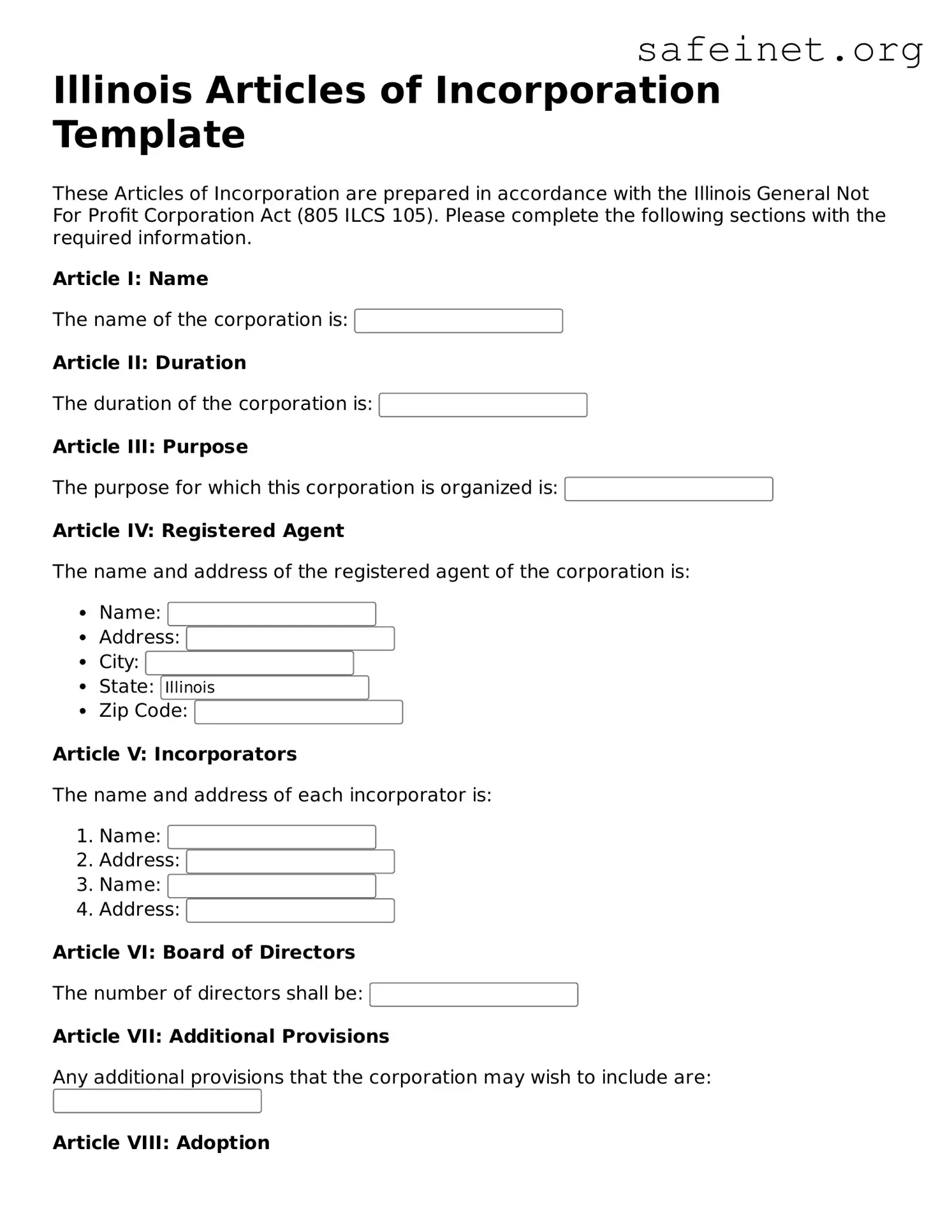The Articles of Incorporation in Illinois share similarities with the Certificate of Incorporation found in many other states. Like the Illinois version, this document establishes a corporation as a legal entity, outlining essential details such as the company name, purpose, and registered agent. Both documents require filing with the state government, making compliance with specific requirements essential for legal recognition.
The Limited Liability Company (LLC) Articles of Organization also closely resemble the Articles of Incorporation. The formation of an LLC involves filing a document that serves a similar purpose—creating a separate legal entity for business owners. Like the Articles of Incorporation, the Articles of Organization include information about the business structure, management, and registered agent, providing a foundation for limited liability protection.
In the realm of non-profits, the Articles of Incorporation can be compared to the Certificate of Incorporation for nonprofit organizations. Both documents serve to establish the entity as a recognized nonprofit. The Certificate of Incorporation for nonprofits requires specific provisions related to charitable purposes and the distribution of assets upon dissolution, paralleling the function of the Articles of Incorporation in setting up governance for the organization.
The Partnership Agreement serves as another document that, while distinct, has some parallels to the Articles of Incorporation. Although it is not a formal filing with the state, a Partnership Agreement outlines the structure and operational guidelines of a business partnership, including responsibilities of partners and profit-sharing arrangements. Like the Articles, it provides a legal framework for managing the organization, even if it is for a different business structure.
The Bylaws of a corporation are related to the Articles of Incorporation in that they provide internal rules for governance. While the Articles establish the existence of the corporation, the Bylaws detail how the corporation will operate on a day-to-day basis, including leadership roles, meeting procedures, and voting processes. Together, these documents clarify the structure and management expectations of the organization.
Another important document is the Certificate of Good Standing. While not a founding document like the Articles of Incorporation, it serves to confirm that a corporation is in compliance with state requirements. This certificate often serves as proof of legitimacy in business transactions, much like the Articles provide initial recognition of a company as a lawful entity.
The Statement of Information, often required for corporations, is another similar document. This filing updates the state on company details such as management structure and address. While the Articles of Incorporation lay the groundwork, the Statement of Information ensures that the state has current information about the corporation, promoting transparency and accountability.
The Notice of Intent to Incorporate can be seen as a precursor to the Articles of Incorporation. It is an initial filing that notifies the state of the intention to create a corporation. Though it does not have the same level of detail, it sets the stage for eventual incorporation and often requires similar types of information as the Articles of Incorporation.
Finally, the Articles of Dissolution are related to the Articles of Incorporation but serve the opposite purpose. While the Articles establish a corporation, the Articles of Dissolution formally dissolve a corporation, marking the end of its legal existence. Both documents require filing with the state and outline specific information about the organization’s status, emphasizing the importance of compliance in both formation and dissolution processes.
